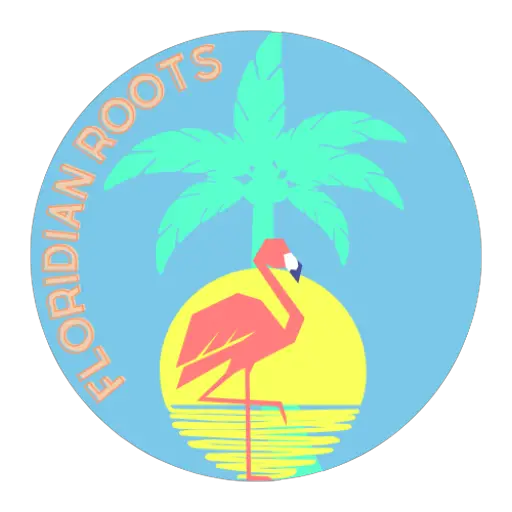Disclosure: Floridian Roots is reader-supported. We may earn an affiliate commission when you buy through links on our site. Learn more.
Starting a blog can be an exciting journey where you get to share your ideas, experiences, or expertise with the world. To begin, it’s crucial to find a niche that you’re passionate about, as this will keep you motivated and help attract the right audience. Picking a unique blog name that reflects your niche and securing a domain are the next steps to establishing your online presence.
Selecting a platform for your blog is another key decision. Many beginners choose WordPress or Wix due to their user-friendly interfaces and customization options. For this blog, I use WordPress. These platforms offer numerous templates that you can modify to fit your style and needs. Once your blog is set up, it’s time to focus on creating content that resonates with your readers and developing a posting schedule that keeps your audience engaged.
Promoting your blog is essential to reaching a wider audience. Utilizing social media, engaging with other bloggers, and optimizing your posts for search engines are effective strategies to increase visibility. As you build your blog, consider how you might eventually monetize it through ads, sponsored posts, or merchandise, turning your passion into a potential source of income.
Choosing Your Blog’s Niche
Selecting a blog niche involves evaluating your interests, understanding who your readers might be, and assessing the competition. This ensures your blog is engaging and unique, capturing the attention of a specific audience.
Evaluating Your Passion and Expertise
First, think about what topics excite you. Blogging requires long-term commitment, so picking something you love is essential. List your hobbies and areas of expertise. For example, if you love gardening, consider a niche focused on urban gardening tips. Passion fuels content creation and keeps you motivated. Be realistic about your knowledge and skills. A deeper expertise not only adds credibility but also helps you produce accurate content. Keep brainstorming to find a niche that aligns with your interests and capabilities.
Understanding Your Audience
Consider who you want to reach with your blog. Identifying a specific audience helps tailor your content to their needs. Think about their age, location, gender, and interests. Use social media or forums related to your niche to research their preferences and challenges. Engage in conversations to gain insights into their pain points and desires. This can inspire more relevant topics and ensure your blog meets readers’ expectations. A well-defined audience makes it easier to create focused content that engages and grows your readership.
Analyzing Market Demand and Competition
Check the market demand for your niche by researching online trends and keywords. Tools like Google Trends or keyword planners show search volumes, indicating interest levels. Look at competitors’ blogs to assess what works and what doesn’t. Analyzing competition helps in positioning your blog uniquely. Identify gaps or underrepresented topics you can explore. This provides opportunities to fill unmet needs in your chosen niche. Understanding both demand and competition ensures your blog has the potential to succeed without being overly saturated.
Setting Up Your Blogging Platform
Choosing the right blogging platform is crucial in creating your blog. You’ll need to decide on a content management system (CMS) and consider whether you want a free service or a self-hosted solution.
Selecting a Content Management System
A content management system (CMS) is what you’ll use to create and manage your blog. WordPress is one of the most popular CMS choices due to its flexibility and powerful features. It’s estimated that WordPress powers a significant portion of all blogs on the internet.
For beginners, there are also platforms like Wix, which offer easy-to-use drag-and-drop editors. These are good for those who prefer a simpler setup process.
When choosing a CMS, consider your technical comfort level, the types of features you need, and the plans for your blog’s future growth. WordPress offers extensive customization and thousands of plugins but requires more maintenance and technical skills. Wix and others provide straightforward tools for quick setup but with some limitations. Evaluate these aspects to find the best fit for your needs.
Comparing Free vs Self-Hosted Options
The next decision is whether to use a free or self-hosted option. Free blogging services like WordPress.com or Wix allow you to start a blog without upfront costs. They are suitable for personal blogging, but they may place ads on your site or limit customization.
A self-hosted blog using WordPress.org provides more control and flexibility. You’ll purchase a domain name and hosting, which does incur costs. This option allows you to fully own your blog, with opportunities for branding and monetization without restrictions.
Consider what you want for your blog in terms of ownership, design flexibility, and potential for growth. If you aim for more control and professional blogging, self-hosting might be better. For those wishing to test the waters or don’t need advanced features, free services are a good starting point.
Domain and Hosting Fundamentals
When starting a blog, selecting a domain name and securing reliable web hosting are crucial. A thoughtful choice in both areas can help establish your blog’s identity and ensure smooth operations.
Choosing a Unique Blog Name
Your domain name is your blog’s address on the internet. It’s important to pick a name that’s unique, easy to remember, and reflective of your blog’s theme or niche. Think about your target audience and the kind of image you want to project.
Use online tools like Namecheap or GoDaddy to check the availability of your desired name. Consider opting for a custom domain name rather than a free domain to give your blog a more professional appearance. A custom domain adds credibility and helps improve your site’s ranking in search engines.
Finding a Reliable Hosting Platform
Selecting a reliable hosting platform is essential. The host you choose will store your blog’s files and make them accessible online. Look for platforms like Bluehost, SiteGround, or HostGator, which are popular for their uptime, customer service, and scalability.
Disclaimer: My blog is hosted by HostGator because they have a great service and help new bloggers start their blogs for a very low price at just $3.75 a month. The links to HostGator are affiliate links, so you get the lowest prices and a free domain for a year! When you use them, I earn some revenue (at no cost to you).
**********IMPORTANT NOTICE! Get your special HostGator price HERE!**********
Ensure the web hosting plan you opt for aligns with your budget and blog’s needs. Most platforms offer various plans, including shared, VPS, and dedicated hosting. Beginners can start with basic plans and upgrade as the blog grows. Prioritize features like speed, security, and customer support when making your choice.
Here are 4 simple steps to start your blog quickly:
1. Click here to get your discounted price and you will land on this screen. Pick a plan that is most suitable for you. Most people start off with the most basic one which is the “Hatchling Plan”. Once you decide which plan you want, click on the button that says “Choose Plan”.
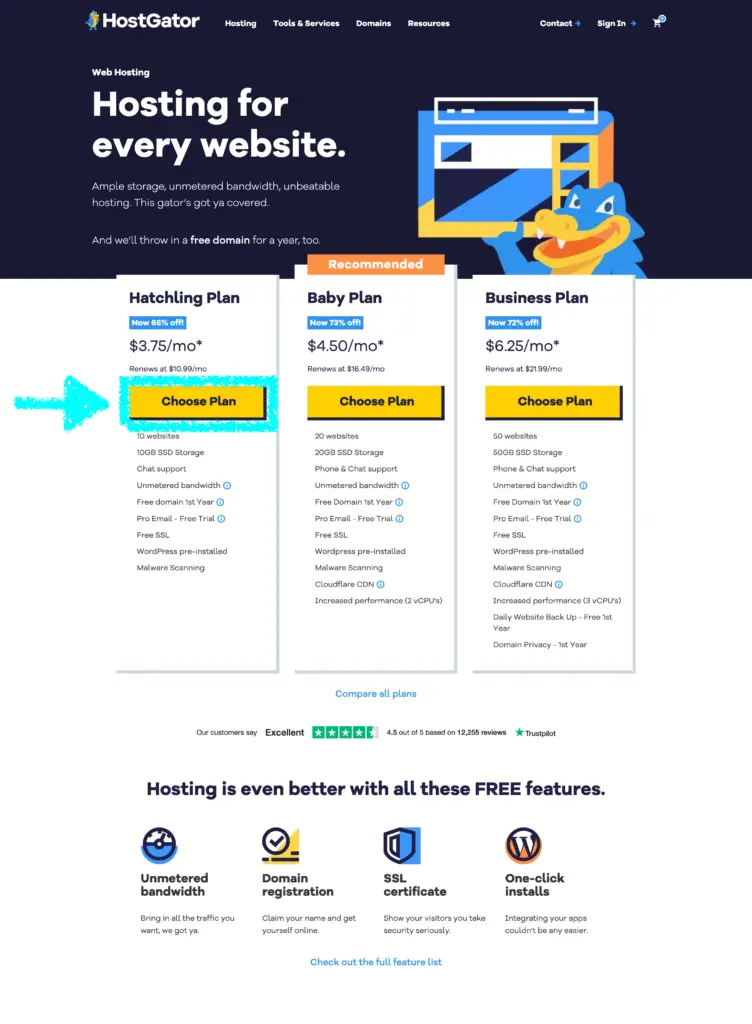
2. On the next screen, if you already own a domain, you can click on the box that says “I want to use a domain I already own.” You can also register a new domain if you don’t have one yet and search to see if it’s available, or even choose a domain later on. I also suggest adding Private Registration to hide your private information such as your name, address, email, and phone number from being public.
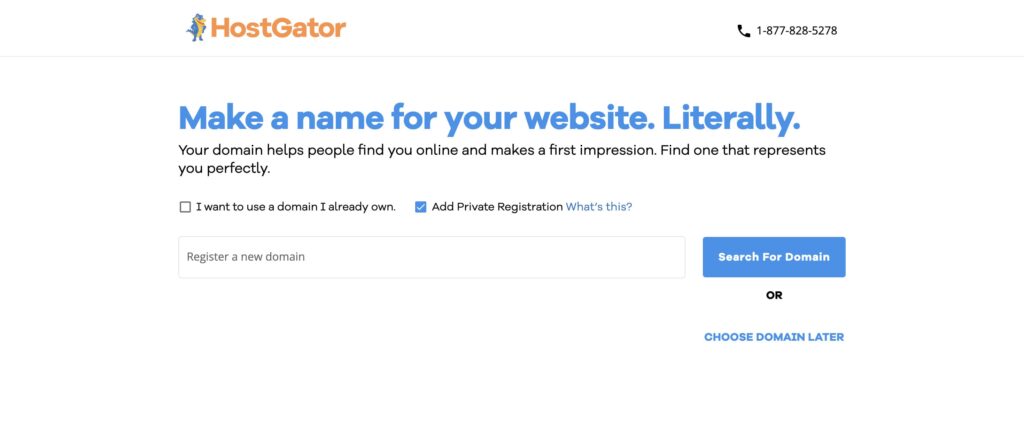
3. You will be taken to the cart to choose how long you want the plan for. You can pick between monthly, 1 year, or 3 years. Once you’re done, you can continue to checkout.
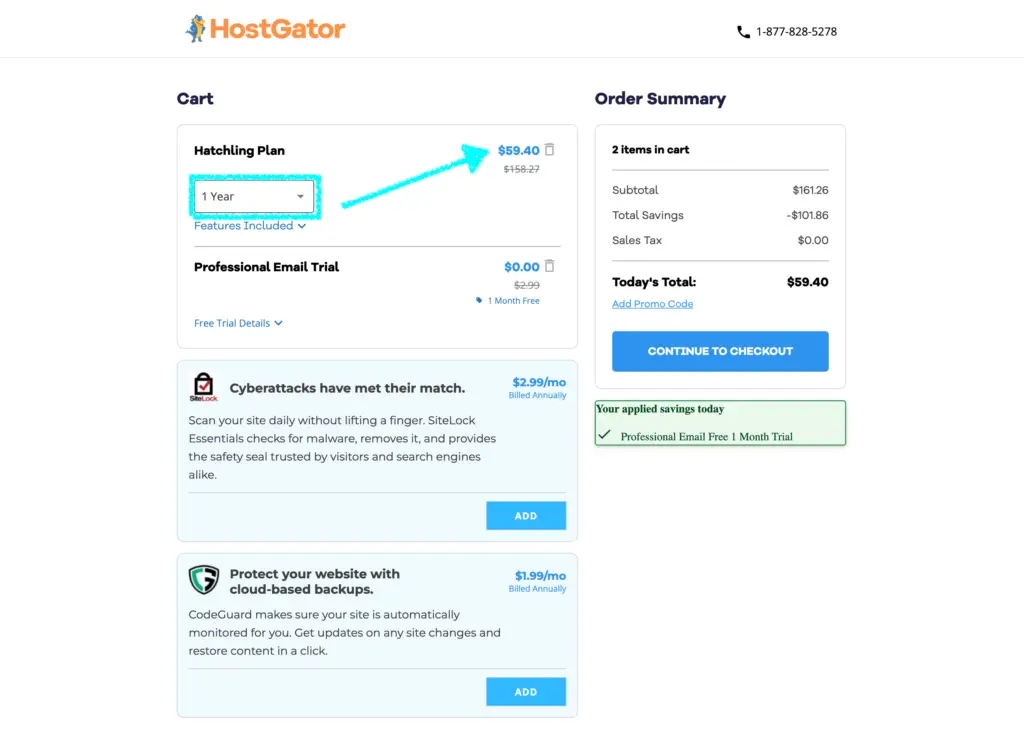
4. Once you’re ready and have filled out all of your information, you can submit your payment. Congratulations! Now you have a website for your blog and a domain!
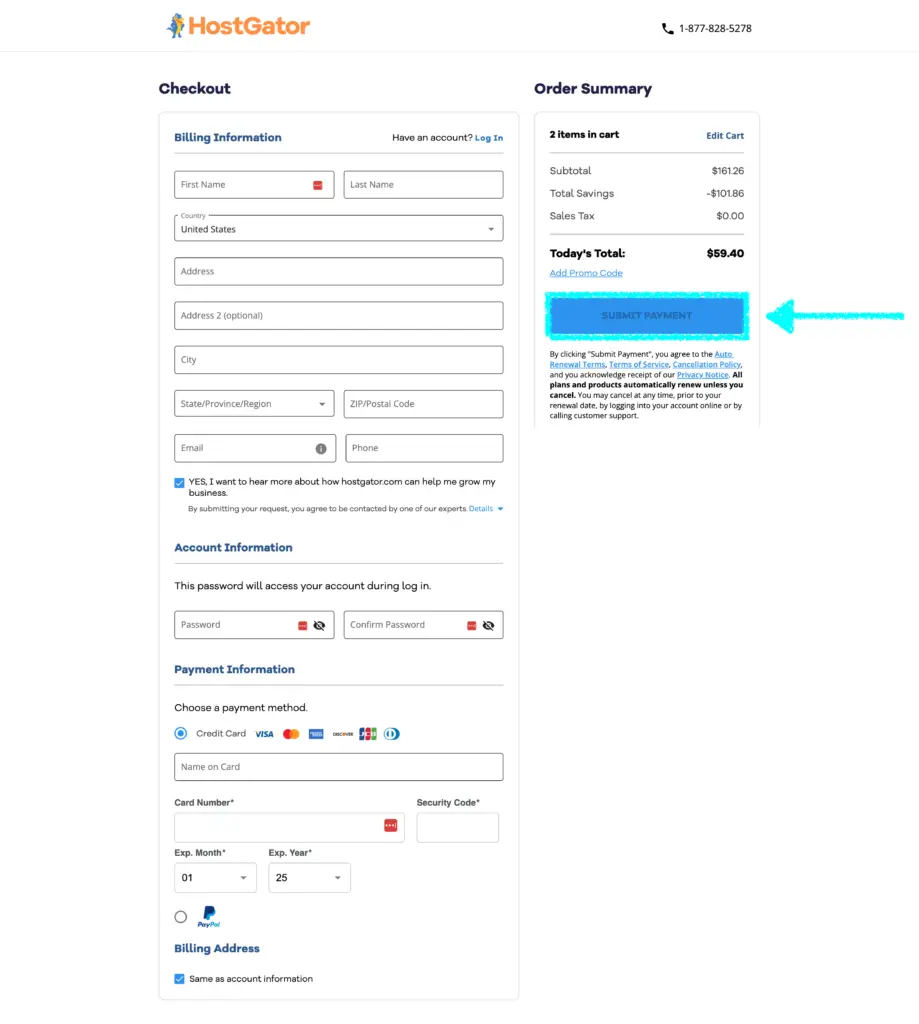
Designing Your Blog
Choosing the right design for your blog is crucial. It involves selecting a fitting theme, designing a professional logo, and customizing visual elements to create a unique feel for your visitors.
Selecting the Right Theme and Template
Choosing a theme is an important step. Your choice of theme sets the tone of your entire blog. WordPress themes and other website builders offer many templates. Look for a responsive theme that looks good on all devices. An aesthetic layout attracts and keeps visitors engaged. Font, color schemes, and navigation should align with your blog’s purpose. Many platforms provide drag-and-drop features making customization easy even for beginners. Picking a versatile template allows for future changes as your content evolves.
Creating a Professional Logo
A well-designed logo will make your blog memorable. Start with ideas that represent your blog’s identity. You can hire a designer or use online tools to create one yourself. A logo should be simple yet effective, incorporating shapes, colors, and text that match your website’s theme. It should be scalable to adapt to different locations on your site, such as your header or email signature. A logo should unite with other visual elements on your blog to enhance brand recognition.
Customizing Visual Elements
Your blog’s visual elements must align with its theme and logo. This includes images, headers, and overall layout. Utilizing a blend of consistent colors, fonts, and styles creates a cohesive look. Most website builders provide tools for adding these elements, often in a drag-and-drop format. Regularly updating visuals keeps your blog fresh and relevant. Aim for a clean and organized layout that enhances readability and aesthetics, drawing users into your content while making navigation intuitive.
Crafting Your First Blog Posts
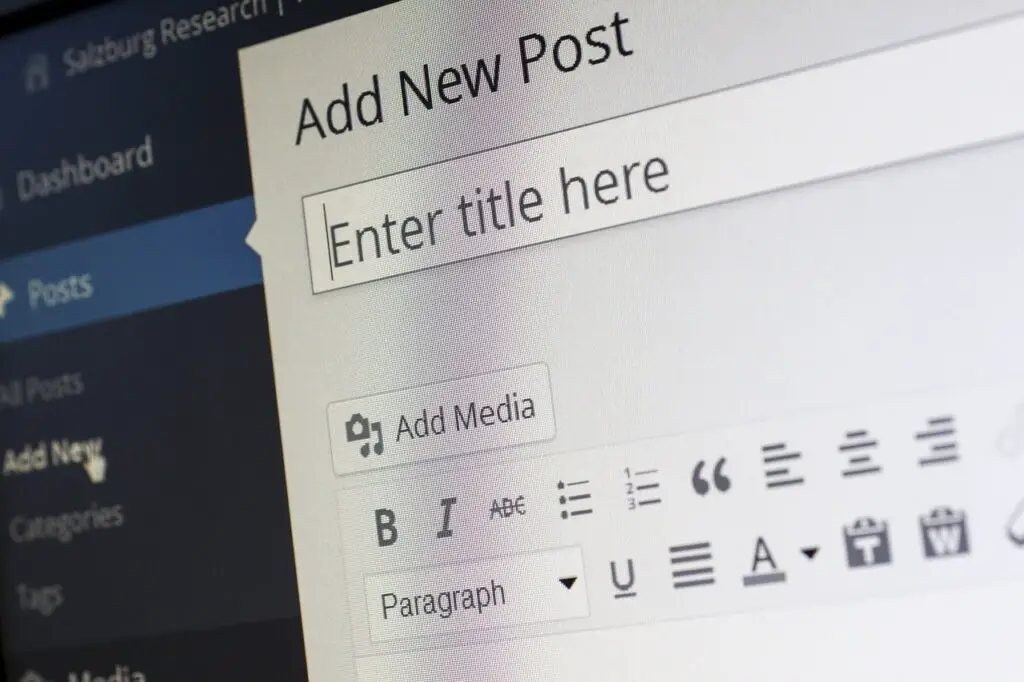
Starting your own blog means focusing on creating content that captures attention and maintains a consistent posting schedule. By honing your writing skills and using an editorial calendar, you can organize and refine your blog posts effectively.
Writing Engaging Content
When crafting your first blog posts, focus on topics you are passionate about. This makes your content more genuine and engaging. Start with a catchy introduction that grabs the reader’s attention. It could be a personal story, a question, or an interesting fact.
Lists and bullet points are great tools. They help break up text and make information easy to digest. Be clear and concise in your writing, ensuring every paragraph adds value.
Share your story in your articles, but keep your audience in mind. Use simple language, as it makes your blog post more relatable. Include images or videos to make your posts visually appealing and to convey your message clearly.
Implementing an Editorial Calendar
An editorial calendar is a valuable tool. It helps you plan and organize your blog posts, ensuring you maintain a regular posting schedule. Use a calendar to note down publish dates, ideas, and deadlines.
Set up a schedule that balances your time and creativity. Planning posts ahead reduces stress and keeps your content fresh. By having a broad view of upcoming articles, you can also identify any themes or topics you need to explore.
Regular updates keep your audience engaged. Use spreadsheets, apps, or even a simple paper calendar to help manage your blog’s content.
Optimizing for Search Engines
Optimizing your blog for search engines is crucial for increasing visibility and attracting more traffic. This involves using great content and effective tools to improve your blog’s ranking.
Understanding SEO Basics
SEO, or search engine optimization, is all about making your blog easier to find on platforms like Google. Effective SEO means using keywords strategically in your blog content. Start by identifying the key topics your audience is interested in. Use tools like Google Analytics to see what kind of content gets the most attention.
Good practices include writing clear, user-friendly content and using relevant keywords naturally. Avoid stuffing your content with too many keywords, as it can harm your blog’s ranking. Regularly updating your content with fresh information also helps keep it relevant in search results.
Utilizing SEO Tools and Plugins
SEO tools and plugins can simplify much of your work. For many bloggers, platforms like WordPress offer plugins such as Yoast SEO or All in One SEO Pack. These help you incorporate SEO best practices into your blog without needing to be an SEO expert.
These tools can guide you in optimizing your meta descriptions, titles, and URLs. They also help with setting up XML sitemaps, which makes it easier for search engines to index your blog. Using analytics to track your progress is also important. It helps you understand what’s working and what needs improvement.
Growing Your Audience
To grow your blog’s audience, you should make the most of social media, build a strong email list, and stay engaged with your community. Each of these strategies helps you connect with your readers and keep them coming back for more.
Leveraging Social Media Platforms
Use platforms like Facebook, Twitter, and Instagram to spread the word about your blog. Share posts regularly and include engaging visuals to grab attention. Connect with readers by responding to comments and messages. Make sure your content is shareable so others can help increase your reach. Consider creating communities, like Facebook groups, where readers can discuss your content. Participating actively will keep your audience engaged and grow your influence.
Building an Email List
An email list is crucial for reaching your readers directly. Start by offering valuable content, like a free e-book or newsletter, in exchange for their email addresses. This encourages people to sign up. Send out regular updates featuring new posts, exclusive content, or insights from your niche. Make sure your emails are well-designed and easy to read, as this keeps readers interested in opening future messages. By maintaining a consistent schedule, your audience will know when to expect updates, building a loyal following.
Engaging with the Community
Community engagement is key. Use your comments section to talk with readers and get their feedback. Asking questions in your posts can spark conversation. This helps you understand what content your audience enjoys. Respond to comments to show that you value reader input. Use platforms like Quora or community forums to share your expertise and engage with new audiences. By being active and approachable, you can create a community around your blog that thrives and supports your growth.
Monetizing Your Blog
Monetizing your blog can be a rewarding step. From leveraging affiliate marketing to selling digital products, there are several strategies you can use to generate income.
Exploring Affiliate Marketing
Affiliate marketing is a popular way to make money blogging. You partner with an affiliate program and promote their products or services on your blog. When your readers make a purchase using your unique affiliate link, you earn a commission.
To get started, select products that align with your blog’s theme. Look for reputable affiliate programs like Amazon Associates, ShareASale, or CJ Affiliate. It’s important to be transparent with your audience. Inform them when you’re using affiliate links. This builds trust and encourages more clicks on the links, boosting your potential earnings.
Setting Up Advertisements
Advertisements are a direct approach to blog monetization. You can display ads using networks like Google AdSense or Media.net, which match ads to your blog content and target audience. These networks handle all the ad placements, making it easier for you.
You can choose from various ad formats like banners, sidebar ads, or in-content ads. Consider where ads fit best on your site to avoid disrupting the reader’s experience. Some bloggers opt for selling ad space directly to businesses for a set fee, which can be more lucrative than ad networks. Evaluate your audience size and demographics to determine the best approach.
Creating and Selling Digital Products
Creating and selling digital products can be a profitable way to monetize your blog. Digital products include e-books, online courses, printables, or templates. They allow you to leverage your expertise and provide value to your audience.
Start by identifying a topic your readers are interested in. Develop a product that solves a problem or fulfills a need. Platforms like Gumroad or Shopify can help you sell your digital goods easily. Promote your products on social media and through email marketing to reach a wider audience. With dedication, this approach can generate a steady stream of income over time.
Maintaining Your Blog
Keeping a blog running smoothly requires regular content updates and robust security measures. Focusing on these areas improves reader engagement and protects your site from threats.
Implementing Regular Content Updates
Fresh content is key to attracting and retaining readers. Plan a content schedule to post consistently. This could be weekly, bi-weekly, or monthly, depending on your resources and goals.
Use a content management system (CMS) to organize and plan your posts. Some systems offer tools for scheduling and collaboration, which is useful if you have multiple writers.
Incorporate different types of content like articles, videos, or podcasts to cater to various reader preferences. Engage with your audience by responding to comments and questions.
Collaborate with other experts if needed. Guest posts can provide new perspectives and expand your reach. Make sure to update any outdated information on your blog to keep it accurate and relevant.
Ensuring Blog Security
Securing your blog is crucial to protect your data and gain reader trust. Use a strong password and change it regularly. Enable two-factor authentication on your blogging tool or platform if available.
Keep your CMS and plugins updated to guard against vulnerabilities. Hackers often exploit outdated software to gain access.
Make regular backups of your website to ensure data recovery in case of failures or attacks. Check if your hosting provider offers automated backups. You can also use additional security plugins or services to monitor and block unauthorized access.
Secure your URL with an SSL certificate to encrypt data and boost your site’s credibility. If you run a professional blog, consider professional customer support services to help manage and address security concerns quickly.
Frequently Asked Questions
Starting a blog involves choosing a niche, creating content, and selecting a platform. You can begin blogging for free and have the opportunity to earn money. Traffic and audience engagement are crucial for success.
What are the steps to starting a blog for beginners?
To start a blog, first decide what topic you want to write about. Select a blogging platform like WordPress. Once you have your topic and platform, choose a domain name and find a hosting provider. After setting everything up, you can start writing and publishing your content.
Can you start a blog for free, and if so, how?
Yes, you can start a blog for free. There are platforms like WordPress.com and Blogger that allow you to create and host a blog without cost. These platforms provide the necessary tools and templates to get you started without needing to pay for a domain or hosting.
How can one monetize a blog and potentially earn income from it?
Monetizing a blog can be done through several methods. You can display ads on your blog, use affiliate marketing, or sell products and services. Sponsorships and partnerships with brands are also popular ways to generate income from your content.
What platforms are recommended for someone interested in blogging for fun?
For fun, platforms like WordPress.com, Blogger, and Medium are great options. These platforms offer various features and are user-friendly. They allow you to focus on writing and sharing your ideas without worrying about the technical aspects of blogging.
What strategies should be considered by new bloggers to increase traffic?
To increase blog traffic, consider using search engine optimization (SEO) techniques. Engaging with your audience through comments and social media can also help. Creating high-quality content and regularly updating your blog keeps readers coming back. Networking with other bloggers can lead to collaboration opportunities and more visibility.
How can you measure the success of your blog in terms of audience engagement?
You can measure the success of your blog by looking at metrics like page views, bounce rate, and time spent on your site. Comments and social media shares indicate engagement. Tools like Google Analytics can track these metrics, helping you understand what resonates with your audience.

Hello everyone! My name is Kimberly, and I was born in Florida. Although I have travelled to a lot of other places outside of Florida and the country, this is the place I still call home. A fun fact about me is that I was a performer at both Walt Disney World and Universal Orlando Resort for a total of 8 years.
